

Scientific name: Nomascus nasutus
Order: Primates
Family: Hylobatidae
IUCN Red List: Critically Endangered
CITES: Appendix I
State Key Protected Wild Animal List of China: Class I
Species profile
The Cao-vit Gibbon (also known as Eastern Black Crested Gibbon) is one of the seven native species of gibbons in China. This species was once widely distributed in southern China east of the Red River and in northeastern Vietnam, but its numbers declined sharply due to hunting and habitat destruction, and it was considered extinct from the 1960s onwards. In 2002, some researchers rediscovered the species in a karst forest in northern Vietnam near the border. In 2006, Kadoorie Farm and Botanic Garden (hereinafter KFBG) led a survey team to rediscover the species within China, obtaining the first photographic evidence of the Cao-vit Gibbon in the country. KFBG’s efforts successfully facilitated the subsequent establishment of the Guangxi Bangliang Gibbon National Nature Reserve (hereinafter "Bangliang Gibbon NNR"). This karst forest spanning both countries remains the only habitat for the Cao-vit Gibbon globally.

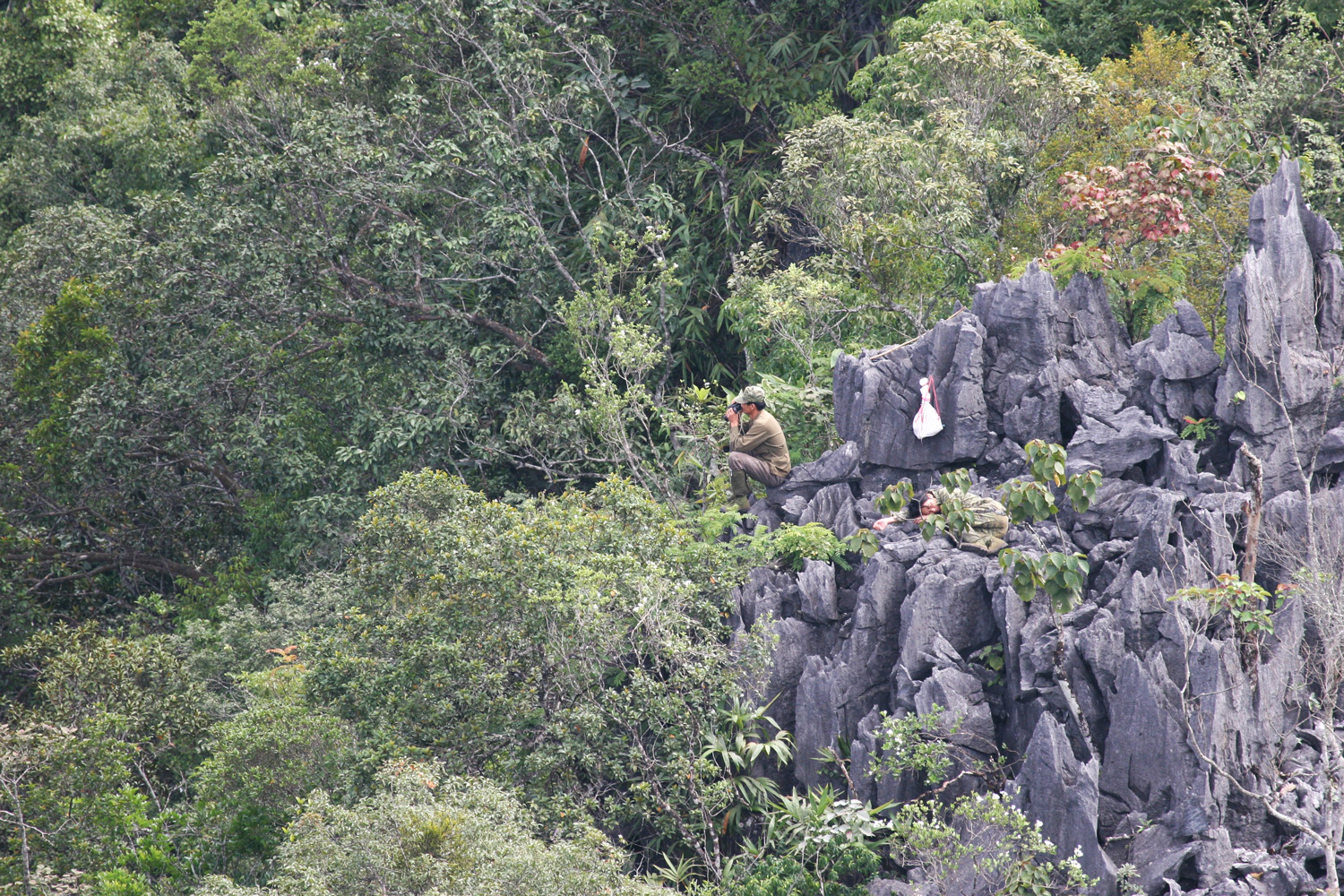
Gibbons typically begin singing at dawn, which is the prime time for surveying them. The gibbon monitoring team must leave the base camp before dawn and stay at monitoring post on the treacherous mountain slopes for six to seven hours. When physically exhausted, they can only take turns resting.
The Cao-vit Gibbon is a typical arboreal animal with flexible wrists and excellent climbing and swinging abilities. Their diet primarily consists of fruits, though they occasionally consume leaves and small animals. These gibbons are family-centred, jointly foraging, resting, and defending their territory. A typical family unit comprises one adult male, two adult females, and their offspring. All newborns are entirely black; males remain black throughout their lives, while females turn yellowish-brown at sexual maturity (around age 8). Upon adulthood, gibbons leave their natal family to seek mates and form new families.

|

|
Survival Threats
According to 2021 research estimates, the global population of Cao-vit Gibbon is 74 individuals, confined to a karst forest of less than 50 square kilometres on the China-Vietnam border. Monitoring data shown 39 individuals in Bangliang Gibbon NNR in 2024. Such a tiny population faces greater extinction risks, and there is an urgent need to improve the habitat quality and restore the population.

The primary factor restricting the population expansion of the Cao-vit Gibbon is habitat fragmentation and degradation. The karst forest is near its maximum capacity, struggling to provide sufficient space and food for more gibbons. Surrounded by rivers, villages, and roads, it's difficult for gibbons to disperse outward. Additionally, local villagers around the reserve are traditional farmers, with goat herding as a primary livelihood. The free-range grazing practice has led to vegetation destruction within the reserve by goat herds, hindering vegetation regeneration and recovery, causing soil erosion, and further degrading gibbon habitat quality.

A large number of free-ranging goats, skilled climbers, can reach deep into the reserve to feed on tree seedlings and tender leaves, obstructing forest restoration and regeneration
Our Conservation Initiatives
Since 2023, KFBG has partnered with Bangliang Gibbon NNR and Wildlife Conservation Association of Guangxi Province to enhance gibbon conservation through a multi-faceted approach involving the public, local communities, management authorities, and habitat preservation.
1. Community-based Conservation
We conduct community visits to assess local environmental conditions, livelihoods, and conservation awareness. By creating communication platforms for stakeholders, we facilitate dialogues among Bangliang Gibbon NNR, surrounding communities, and township governments, fostering joint efforts in gibbon conservation and sustainable community development. This collaboration establishes a foundation for restoring and managing gibbon habitats collectively.

KFBG team visited local communities surrounding Bangliang Gibbon NNR to understand public needs |

KFBG team organised stakeholder meetings to encourage discussions on habitat restoration and sustainable goat herding |
We've initiated preliminary habitat restoration work in Bangliang Gibbon NNR, inviting experts to evaluate vegetation in gibbon habitats, degraded areas, and reforestation zones. Their recommendations guide our habitat restoration efforts, considering both ecological conditions and human activities.
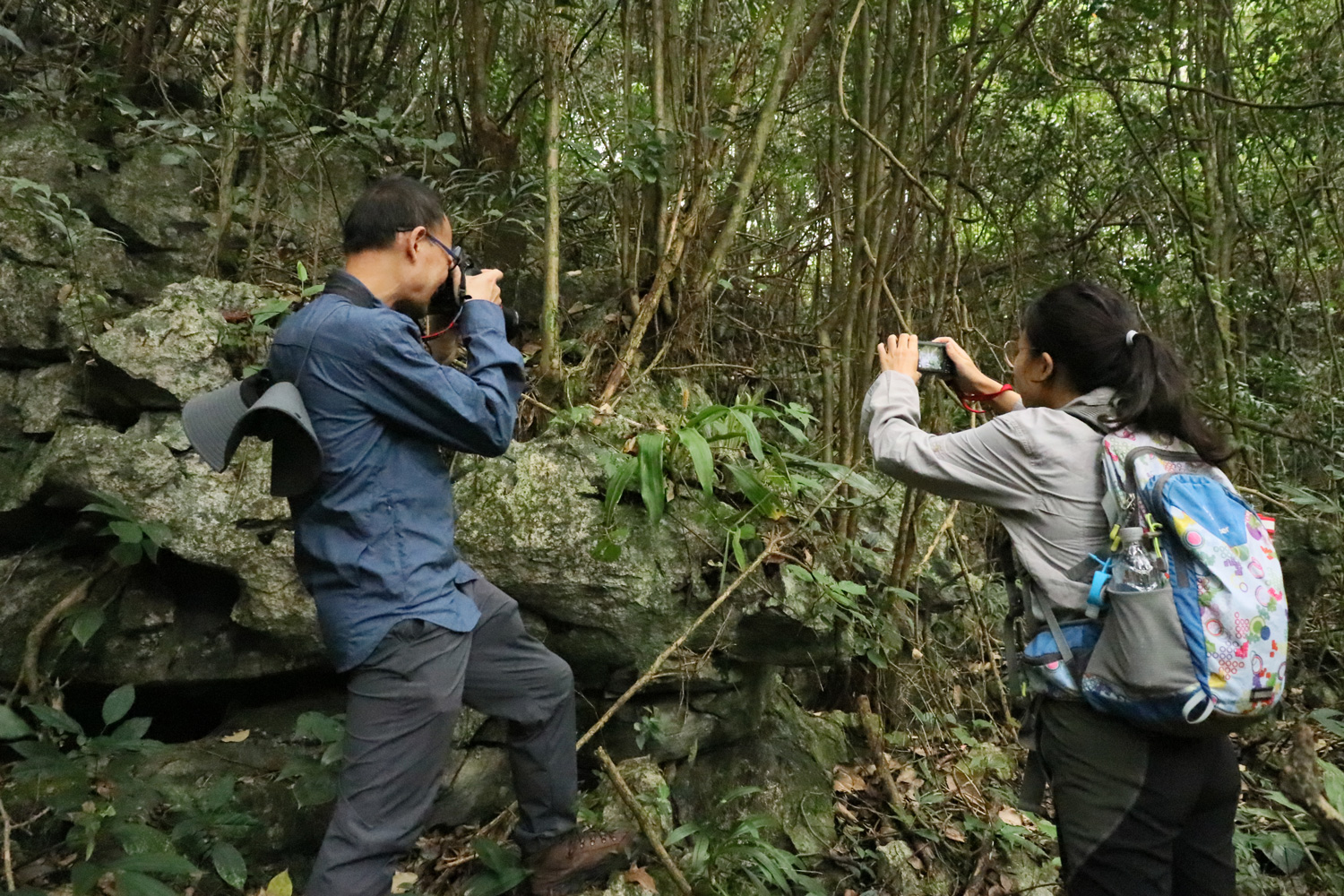
KFBG’s ecologist and a local botanist conducted vegetation surveys
To reduce the impact of “free-ranging” goat keeping on the forest’s natural restoration, we promote eco-friendly goat keeping practices among goat herders, and organise learning trips for them to visit advanced breeding facilities to forest knowledge exchange and networking. Additionally, we introduce them community birdwatching and eco-tourism as alternative sustainable livelihoods.
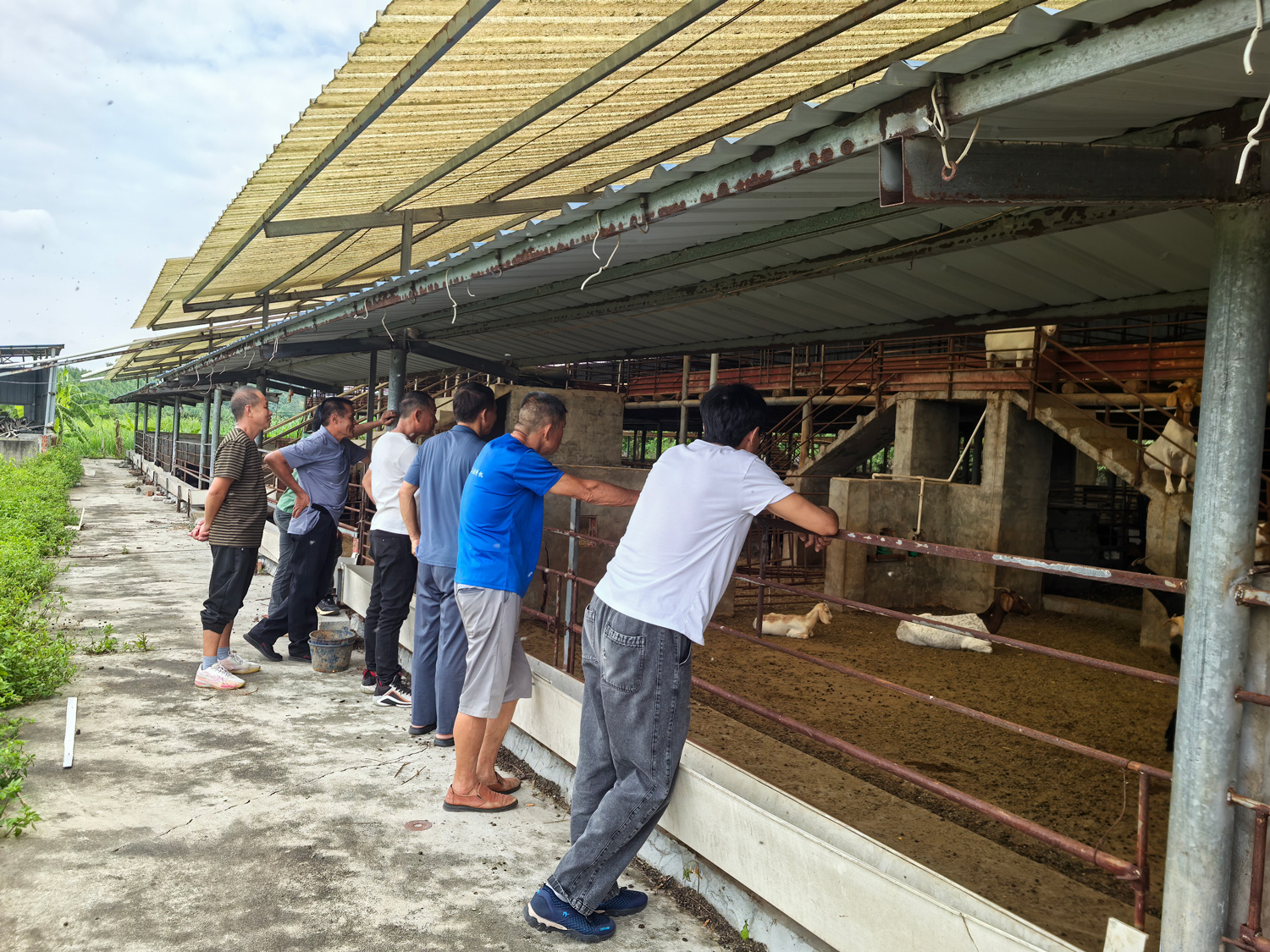
KFBG team led goat herders on a tour of breeding facilities |
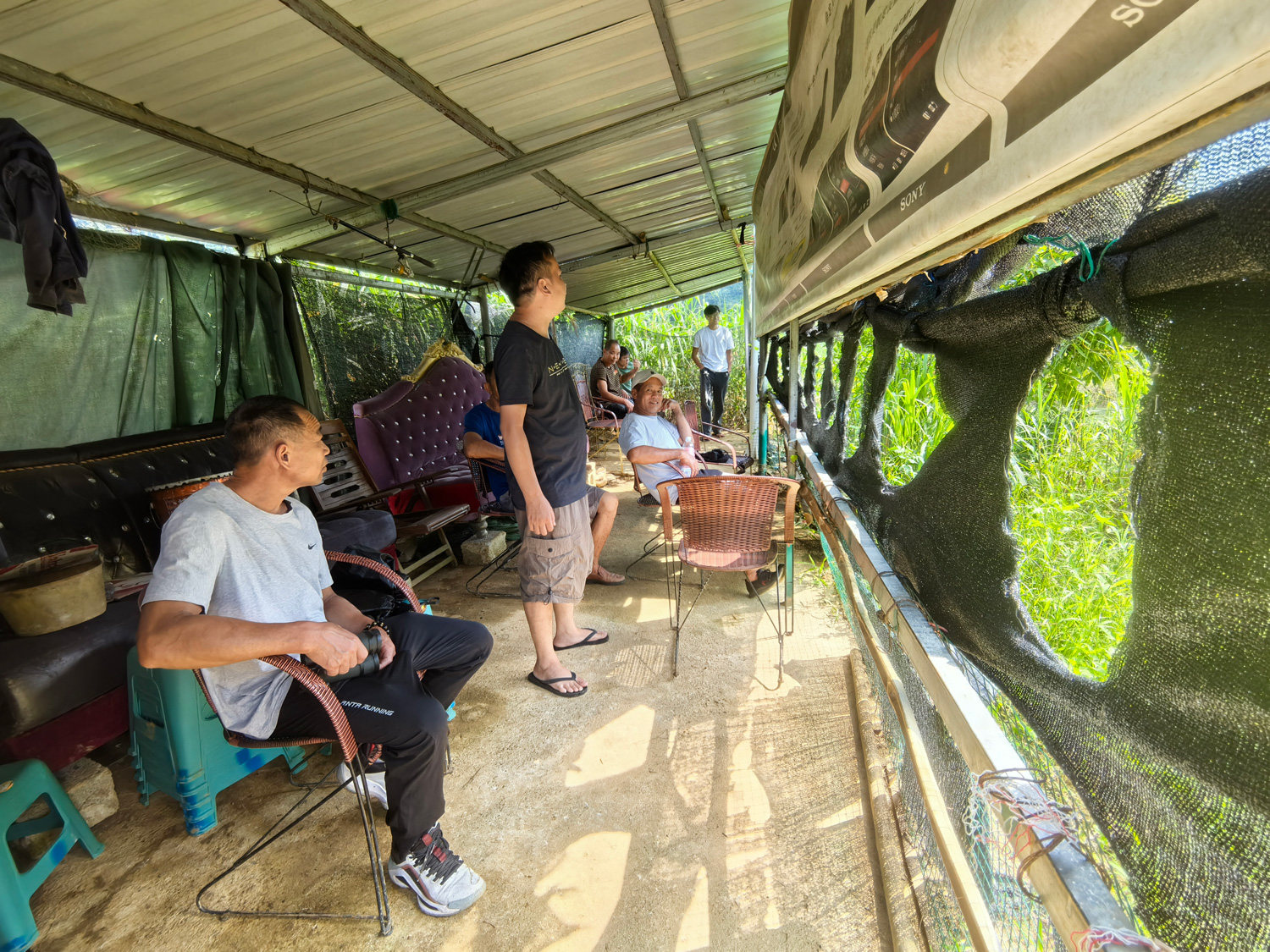
KFBG team leads goat farmers to examine successful cases of community birdwatching sites |
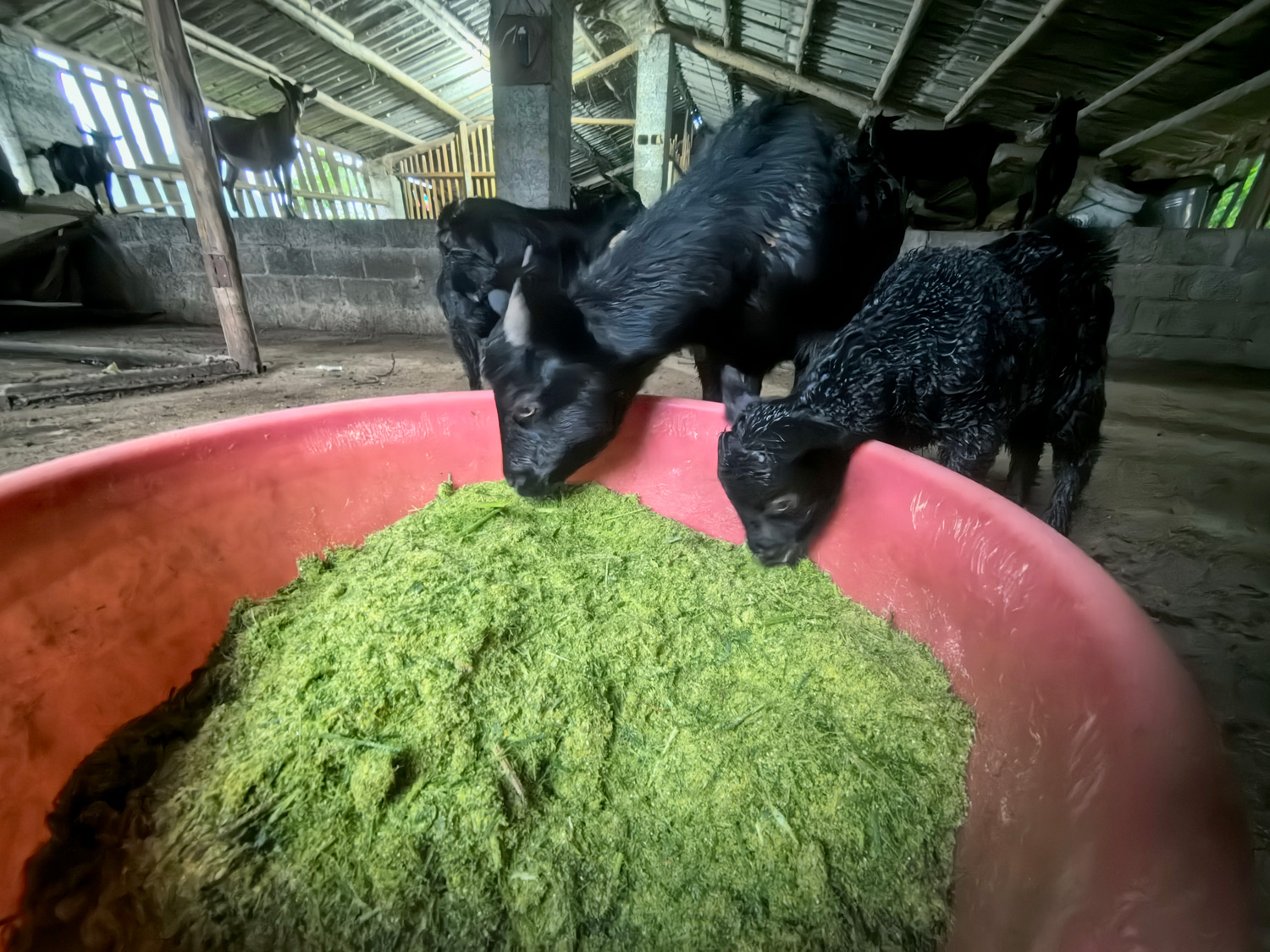
Under guidance, some goat herders began penning goats and feeding them with improved forage |
2. Public Awareness and Education
To enhance local and public understanding of gibbons and encourage support for conservation efforts, KFBG organises diverse educational activities. In 2024, we partnered with the Wildlife Conservation Association of Guangxi Province to host a 9-day "Gibbon Bond" event in Nanning, Guangxi's capital. This event featured exhibitions, talks, documentary screenings, interactive games, and workshops, effectively raising public awareness about gibbon conservation.

"Gibbon Bond" event attracted a significant number of visitors, fostering public engagement with conservation efforts |
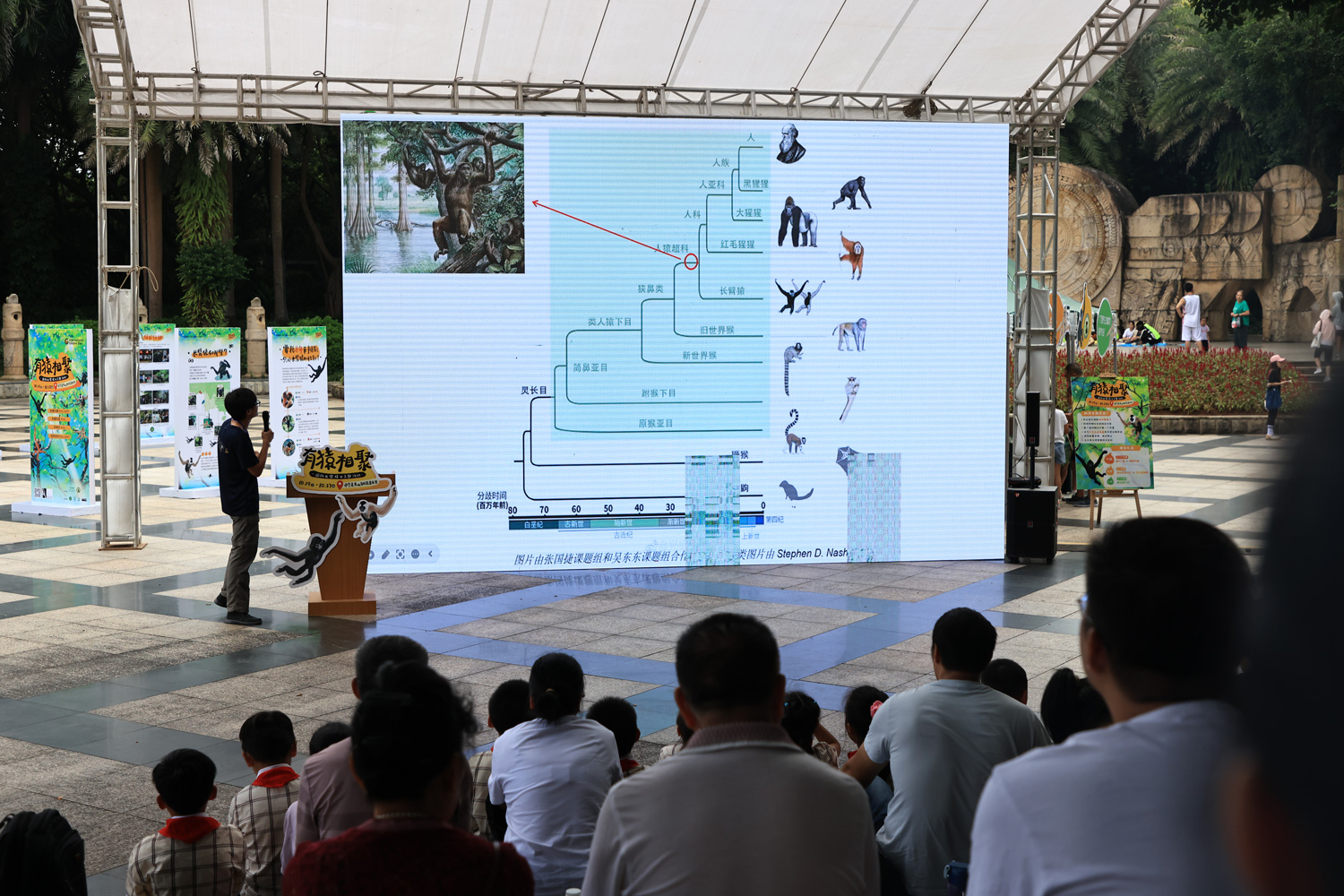
KFBG’s expert was introducing China's gibbons to the public |
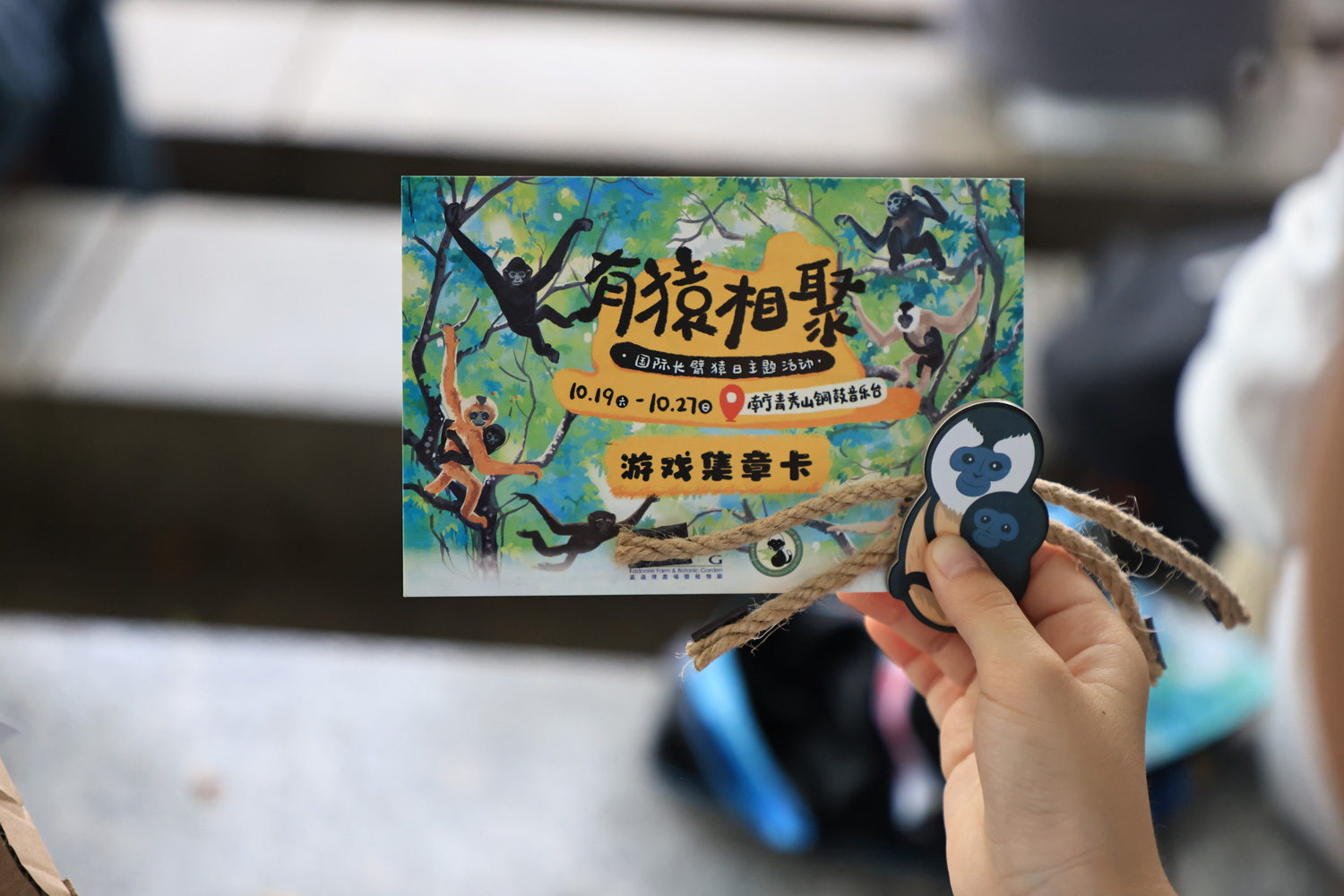
|

The documentary "Cao Vit Gibbon's Ark" uncovers the mysteries of the Cao-vit Gibbon |
We also focus on educating children and youth in communities near the reserve. In collaboration with Guangxi Biodiversity Research and Conservation Association, we launched a 5-day "Guardians of Gibbonland: Youth Conservation Education Camp” and “Gibbon Dream Take Flight: Conservation Education in Schools”. These initiatives combine scientific knowledge with fun activities to educate young people about local gibbons and human impacts on their habitat, inspiring ecological conservation awareness and motivations.
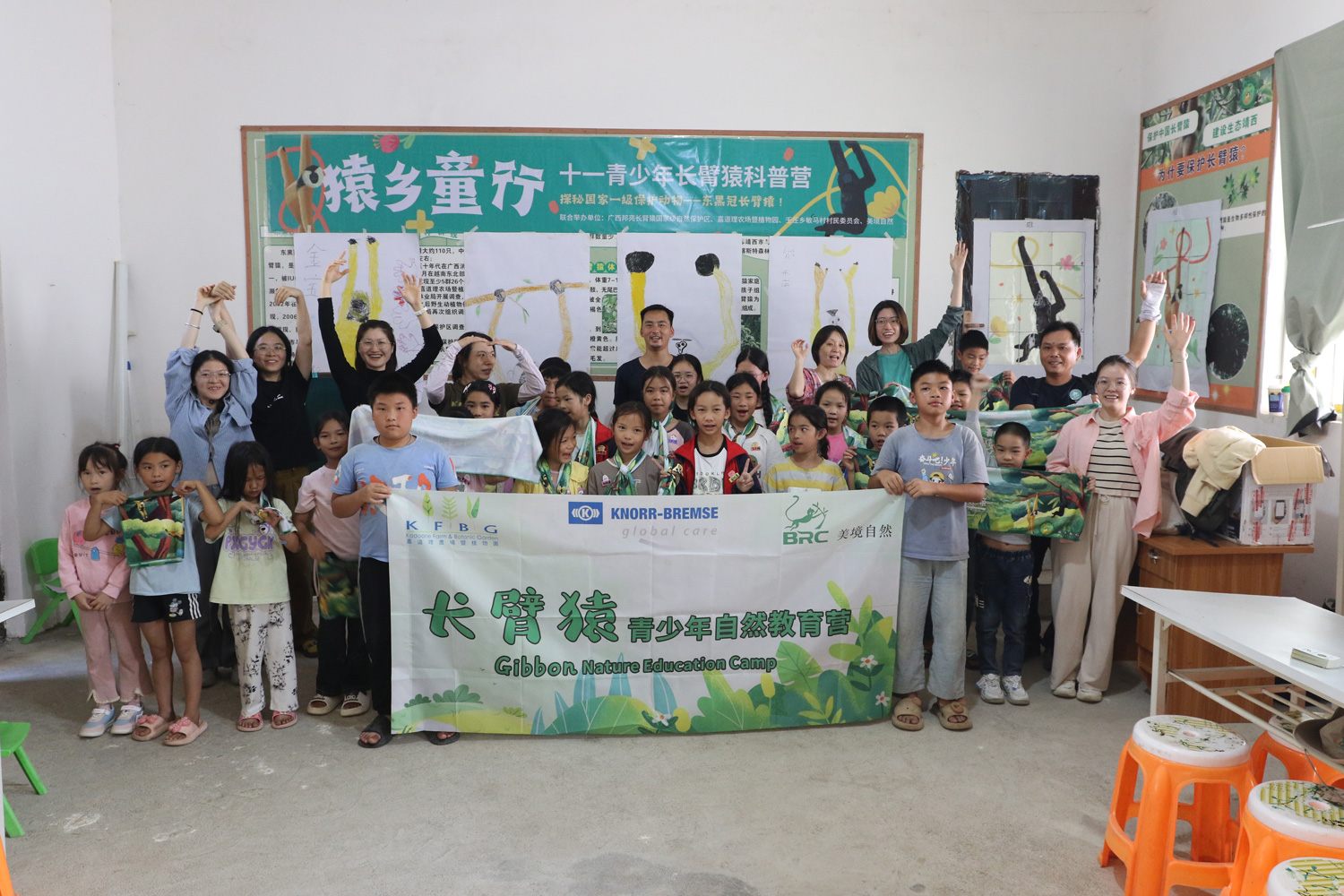
Guardians of Gibbonland: Youth Conservation Education Camp
.jpg)
“Gibbon Dream Take Flight: Conservation Education in Schools” event
.jpg)
The “Popular Science in Schools” included science talks, fun fairs, and themed exhibition visits, allowing students to learn through various methods |
.jpg)
|
.jpg)
KFBG team distributed educational materials like calendars, T-shirts, and cloth bags during community events |
.jpg)
|
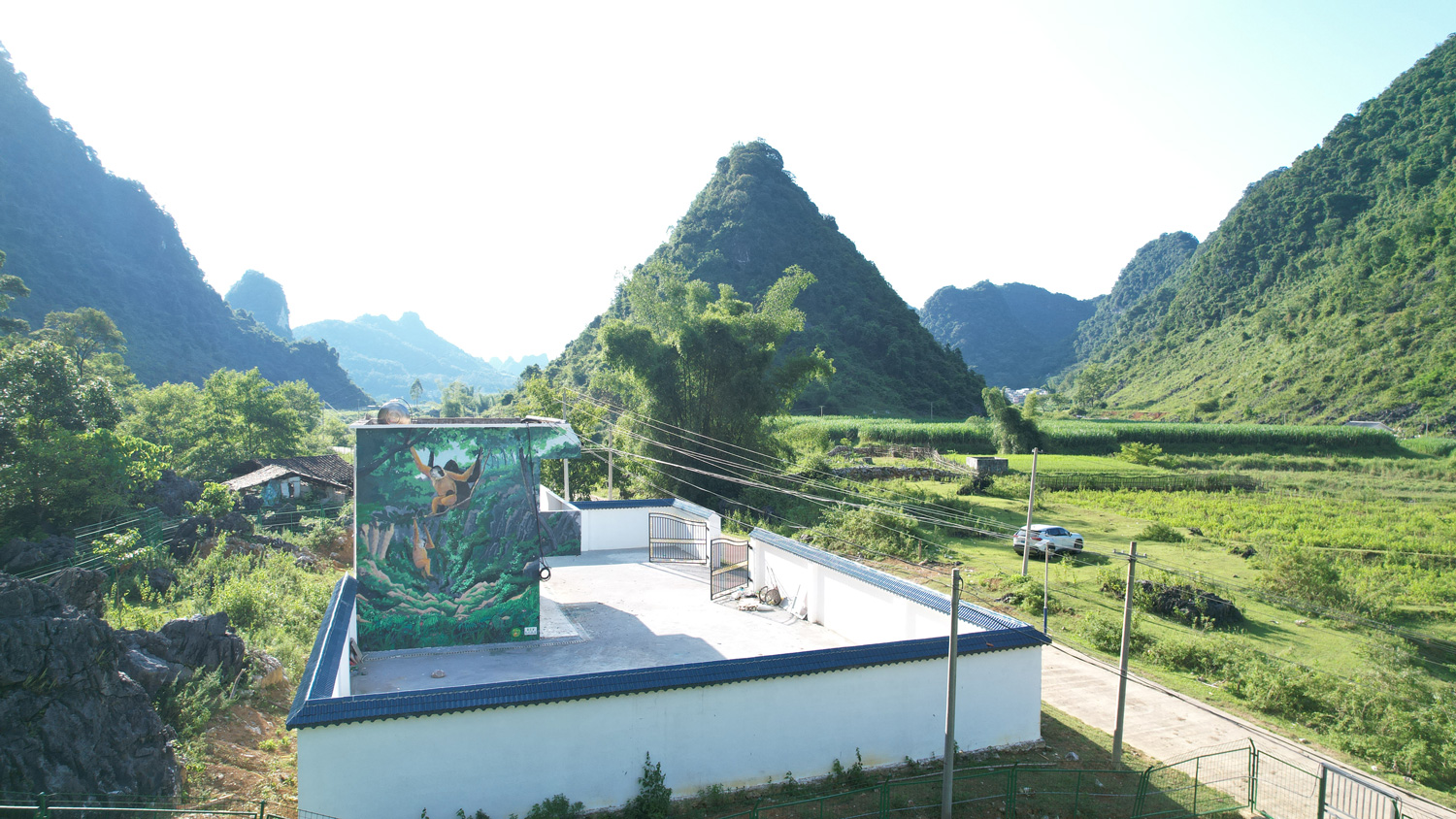
KFBG team also recruited an artist to paint a gibbon-themed mural on the outer wall of the conservation station in the reserve, beautifying the village while enhancing villagers' pride in having gibbons in their area
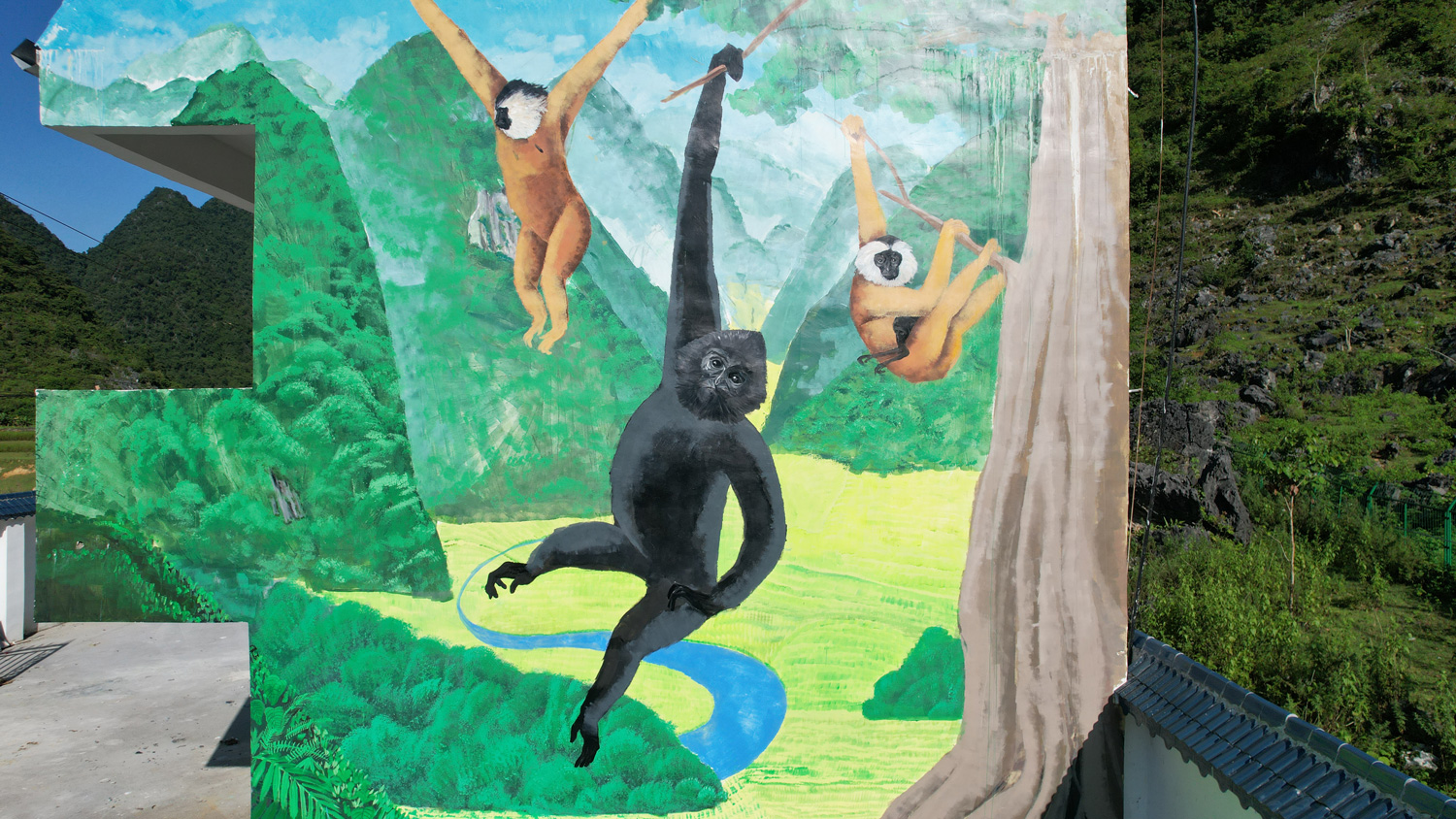
The mural depicts the family structure of gibbons and their postures in the treetops
Source:
1. Wearn, O. R., Trinh-Dinh, H., Ma, C. Y., Khac Le, Q., Nguyen, P., Van Hoang, T., ... & Duc Nguyen, T. (2024). Vocal fingerprinting reveals a substantially smaller global population of the Critically Endangered cao vit gibbon (Nomascus nasutus) than previously thought. Scientific Reports, 14(1), 416.
